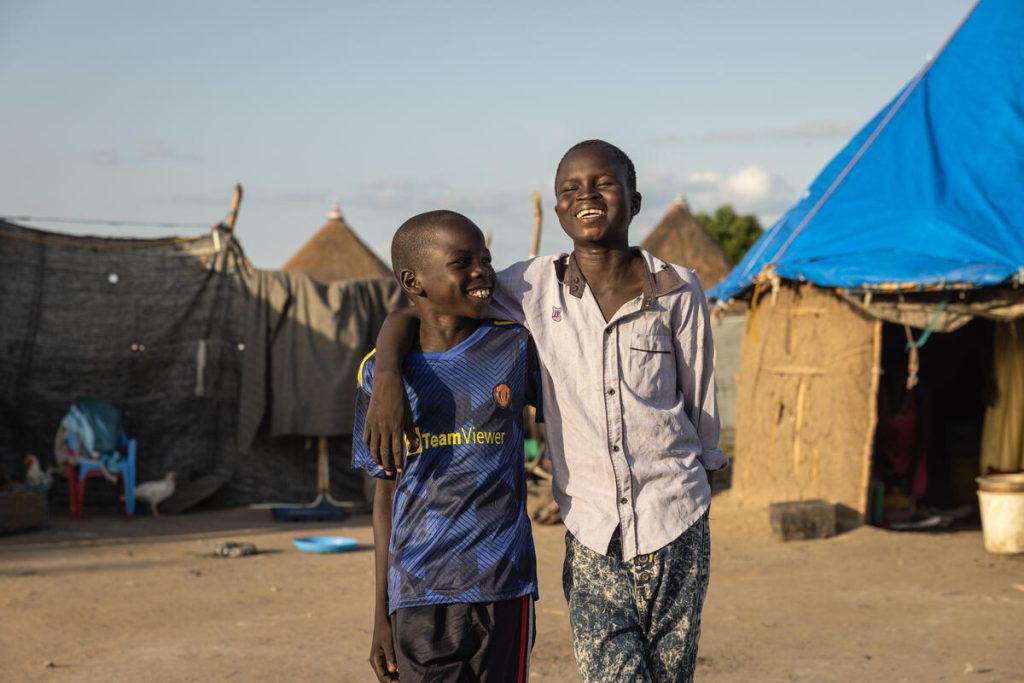How is rising conflict contributing to the worst hunger crisis in decades?
In 2023, thirty-three children are born into the hunger crisis every minute, according to a recent Save the Children study.
The combination of conflict, economic instability and climate shocks has created the worst global food crisis in decades.
Hunger not only devours children’s dreams, but it also threatens their survival. Without enough food or the right nutrition, children can’t learn, play, or grow. They should be exploring with their friends or expanding their minds in class. Instead, too many are worrying about where their next meal will come from. What goes into the Child Hunger Lunchbox? Learn more here.
How does conflict cause hunger?
Damaged infrastructure, livelihoods and displacement leave millions facing food shortages in conflict, while in some of the worst cases, starvation is used as a method of warfare.
A rising tide of conflict – from Ukraine to Mali to Gaza – is forcing families from their homes, destroying farmland and creating tens of millions of refugees who struggle to get the food they need.
The recent escalation in hostilities witnessed in the occupied Palestinian territory (oPt) and Israel will push more families into food insecurity and put children’s health and wellbeing at severe risk. The latest data shows 1 in 3 people across occupied Palestine territory are facing severe levels of food insecurity.
In the Democratic Republic of Congo, about 1.5 million newborns are projected to be born into the grips of hunger in the DRC – the highest number recorded for the country since he Food and Agriculture Organisation of the UN (FAO) records began in 2001.
And Afghanistan is bracing for the highest number of children born into hunger in Asia among countries with vast levels of undernutrition – with roughly 440,000 children estimated to be born into hunger in 2023.
Many children are surviving bombs and bullets, only to face the threat of hunger.
What are we doing?
Conflicts are often complex, but feeding children isn’t.
Save the Children works in 116 countries. This means that with the help of local partners, we can deliver lifesaving nutrition programming and long-term livelihood support on a truly global scale. We have the knowledge, network and staff to stop hunger in its tracks, but you have the power to make it happen.

We have four key steps when it comes to addressing food security:
Step 1: Save the Children completes a food security analysis to forecast food availability and predict the impact of climate, economic or conflict shocks like El Niño or the conflict in Gaza.
Step 2: Anticipatory Action means we work with local communities to identify risks and then mitigate them. This reduces the impact, reduces the cost and most importantly, saves lives.
Step 3: When hunger strikes, we are there to screen children for malnutrition, treat them with therapeutic nut pastes, provide medicines and medical care when cases have become complex, complete follow-up assessments for six months, give families food kits and provide families with cash so they can access food and other essential items.
Step 4: We go beyond food. We believe in long-term, sustainable solutions to food insecurity. To do this we combine local knowledge of pastoralism, agriculture and the local economy, with our expertise in health, nutrition, forecasting and anticipatory action to provide sustainable solutions to food security and hunger.
All the time
We are working with local communities, international, national and local organisations and governments to stamp out inequality and food insecurity through our policy and advocacy work.
Huge progress has been made in the past to reduce global hunger. And even with the recent declines that began in 2019, we strongly believe these goals can be achieved again.
That is why we must not address the hunger crisis as an independent issue but work to tackle its root causes, including climate crisis and global inequality as well as building more resilient health, nutrition and social protection systems.


